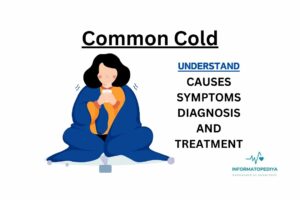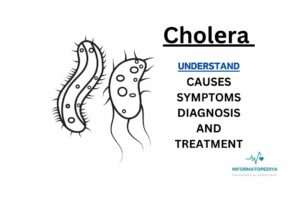
Table of Contents
Understanding Asthma: Causes, Symptoms, Diagnosis, Treatment, Management and How to Use Asthma Bag Effectively
What Is Asthma?
Introduction:
Asthma is a chronic respiratory condition that affects millions of people worldwide, making it one of the most common chronic diseases. In this article, we’ll explore the ins and outs of asthma, from its causes and symptoms to diagnosis, treatment options, and effective management strategies.
Definition:
Asthma is a chronic lung condition characterized by inflammation and narrowing of the airways. This can result in recurring episodes of breathlessness, wheezing, chest tightness, and coughing, especially at night or early in the morning.
Causes:
The exact cause of asthma remains unclear, but it is believed to result from a combination of genetic and environmental factors. Triggers can include allergens (e.g., pollen, dust mites), respiratory infections, smoke, air pollution, and even stress.
Symptoms:
- shortness of breath.
- wheezing (a whistling sound when breathing).
- chest tightness.
- coughing, particularly at night or early morning.
- difficulty in speaking due to breathlessness.
Diagnosis:
Diagnosing asthma typically involves a combination of medical history, physical examination, and lung function tests. Spirometry, a common lung function test, measures how much air you can exhale and how quickly. Peak flow measurements may also be used to monitor airflow.
Treatment:
Asthma management is controlling symptoms and preventing exacerbations. Treatment options include
Bronchodilators:
- These medications relax the airway muscles and quickly relieve symptoms during an asthma attack.
Inhaled corticosteroids:
- These anti-inflammatory drugs are used to control chronic symptoms and reduce airway inflammation.
Leukotriene modifiers:
- These medications help control immune system reactions that trigger asthma symptoms.
Biologics:
- For severe asthma cases, biologic therapies target specific immune responses.
Management:
Effectively managing asthma involves several key strategies:
- identifying and avoiding triggers.
- creating and following an asthma action plan provided by your healthcare provider.
- regularly monitoring your lung function with a peak flow meter.
- Staying Up-To-Date with Vaccinations, Especially Flu and Pneumonia Shots.
- educating yourself about asthma and its management.
- using inhalers correctly to ensure you receive the right dose of medication.
What Is Asthma Bag
Asthma Bag: Your Medication Solution
An Asthma Bag is a compact, insulated carrier designed to store asthma medication and EpiPens.
1. Storage: Place your asthma medication, EpiPens, and related items inside the bag.
2. Custom Insert: Utilize the customized insert to clearly label the child’s details, attendance schedule, medication specifics, and expiration dates for easy identification.
3. Capacity: This bag is spacious enough to hold medication, a spacer, action plan, EpiPens, and wipes, making it suitable for various settings.
In emergency situations, the Asthma Bag stands out, ensures quick identification, and supports children at risk of allergies and asthma.
How To Use Asthma Bag
Assume you’re referring to an inhaler when you mention an “Asthma Bag.” Asthma inhalers come in various types, including metered-dose inhalers (MDIs), dry powder inhalers (DPIs), and nebulizers. Here are some general instructions on how to use these devices to manage asthma:
1. Consult Your Healthcare Provider: Before using any asthma medication or device, it’s crucial to consult your healthcare provider. They will prescribe the appropriate medication and provide personalized instructions.
2. Wash Your Hands: Always start by washing your hands thoroughly to ensure cleanliness.
3. Shake the Inhaler (MDI): If you’re using a metered-dose inhaler (MDI), shake it well before each use, unless otherwise instructed by your healthcare provider.
4. Prepare the Inhaler (MDI): Remove the cap and hold the inhaler upright. If it’s a new inhaler or one you haven’t used in a while, prime it as per the manufacturer’s instructions (usually by spraying a few puffs into the air).
5. Breathe Out: Exhale gently and completely to ensure your lungs are empty.
6. Inhale and Activate the Inhaler: Place the mouthpiece of the inhaler between your teeth and close your lips around it, creating a good seal. Ensure your tongue is below the mouthpiece. With the inhaler in the upright position, start inhaling slowly and deeply while simultaneously pressing down on the inhaler’s canister. This releases the medication into your lungs. Continue to inhale slowly and deeply.
7. Hold Your Breath: After inhaling the medication, remove the inhaler from your mouth and hold your breath for about 10 seconds or as long as is comfortable. This allows the medication to reach deep into your lungs.
8. Exhale Slowly: Exhale slowly and gently away from the inhaler to avoid exhaling the medication.
9. Wait Before the Next Dose: If you need another puff, wait as long as instructed by your healthcare provider or the medication’s label before taking another one. It’s typically around 30-60 seconds between puffs.
10. Clean and Store: After using the inhaler, recap it (if applicable) and clean it regularly as per the manufacturer’s recommendations. Store it in a cool, dry place.
For dry powder inhalers (DPIs) and nebulizers, the instructions may vary slightly, so it’s essential to follow the specific guidance provided by your healthcare provider or the device manufacturer.
Remember to keep track of your medication usage, follow your asthma action plan, and consult your healthcare provider for regular check-ups and adjustments to your treatment plan as needed. If you have any concerns or difficulties using your asthma inhaler, don’t hesitate to reach out to your healthcare provider for guidance and assistance.
Conclusion:
Asthma is a common, chronic respiratory condition that affects people of all ages. While there is no cure, asthma can be effectively managed with the right treatment and lifestyle adjustments. With proper care and adherence to an asthma action plan, individuals with asthma can lead active and healthy lives.
In brief:
Asthma is a chronic respiratory condition characterized by airway inflammation and narrowing. Effective management, including medications and lifestyle adjustments, can help individuals control their symptoms and lead a fulfilling life.







Way cool! Some extremely valid points! I appreciate you writing
this post and the rest of the website is really good.
Thanks for any other informative blog. Where else could I am getting that kind of info written in such an ideal means? I have a project that I am just now working on, and I have been at the look out for such info.
These are in fact fantastic ideas in concerning
blogging. You have touched some fastidious things here.
Any way keep up wrinting.
Hi there to all, for the reason that I am genuinely keen of reading this website’s post to be updated on a regular basis. It carries pleasant stuff.
I used to be able to find good info from your content.
The dedication you have to your readership is truly heartwarming.